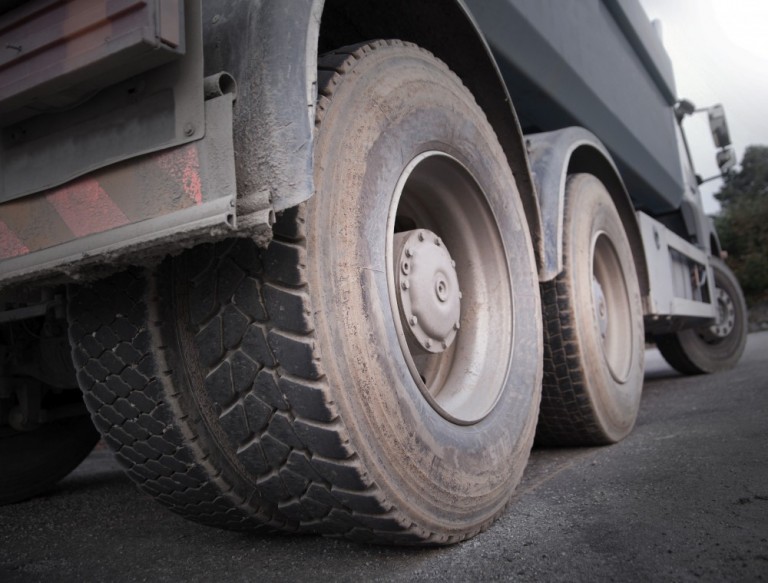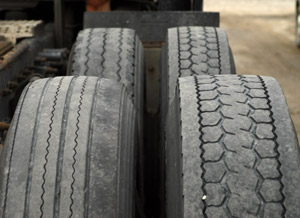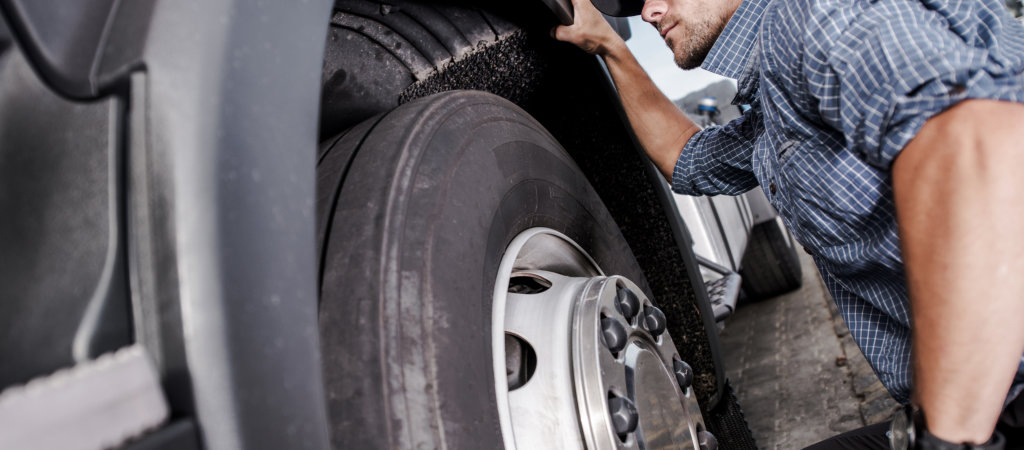Important Things To Know About Commercial Truck tires!
Among the essential asset of a truck are the tires. The function of tires is to connect the truck and trailers to the road. Often it isn’t very easy to understand the importance of truck tires. Tires help the drivers to steer on the terrains, which can be diverse safely. It won’t be wrong if we say that the tires play an essential part in the working and driving a vehicle.
To purchase the right type of tire is essential to benefit your commercial truck for all purposes. You might need the right quality tires for your commercial trucks or regular vehicles. It can create a big difference in how the rig runs and save your time and money both. That is why it is advised to the trucks’ users to take more care of their truck’s tires.
When we talk about purchasing tires, the first thing to focus on is getting the right quality tire even if you need to pay more for that. Getting an inexpensive one, or you can say, getting a low-quality tire will always create a hurdle for you. It is essential to always go for a high-quality truck tire to get future benefits.
Here are few reasons why you must get a high-quality commercial truck tire:
Save time and money: by getting the right kind of tire, you may save money and precious time. Although you need to pay more at first, you will realize that this helped save a lot of money and time both in the long run. You might see that the good ones are tough through ten and also 1000’s of miles. It merely explains that there is no need to add more money to the quality of the tire. Another advantage you will find will be to save on the hassle of getting new ones frequently.
Getting cheap quality tires might waste your time. It might also get on your nerves and for the commercial trucks especially. As there is a lot of load carried on the commercial trucks, by fitting weak quality tires, it may create problems, and you will soon realize that the truck’s tires last longer. The situation will then become uncontrollable. By getting the right quality tires will help you save your time, energy, and money. It is much better to get the right quality tire as it will help to get an excellent rolling resistance. The fuel consumption will also be less as the trucks glide smoothly, and there is no need for acceleration.
Taking good care of your commercial truck tires will help decrease the truck’s running cost as it costs a lot of money. Here are some of the measures that one needs to consider and take care of and follow.
Keep the tires inflated: you are advised to check the tires’ inflation and check the air in them. It must be inflated so that the tire stays smooth, and it won’t create any hurdle. You also need to check the air that how much it is inflated while at the same time filling up the gas to check that it remains complete.
Inspecting the commercial truck tires regularly:
It would help if you inspected the tires of your truck regularly. Check for wear and tear. They often get less efficient at the time of treads to wear out, resulting in more cost. You need to purchase fuel, which makes the traction low and might lower the tires’ life.

MONEY-SAVING TIPS:
1. Don’t think that you can save money by replacing only one tire in a pair of drive or trailer tires. The new tire with deeper tread will most likely wear down prematurely, causing you to have to replace it more quickly. Even though it is more expensive to replace both simultaneously, especially when they are close to needing to be replaced anyway, they will wear at the same rate.
2. Many truck drivers do a visual inspection of the depth of their tire tread when they check their tires with a “tire thumper.” This may not be adequate, depending on your company’s requirements. If you are an owner-operator, measuring the depth may be more important to you because you’re paying for the tires.
3. Watch for other problems associated with uneven wear on a tire tread, which may be an indication of a problem. For example, a tire that wears more on one side than another may be a sign that your truck has an alignment problem. Replacing the tire in this case will not solve the problem. The truck must first be realigned.
4. Experts recommend that you measure tread depth at least once a week.

How to extend the life of commercial truck tires
Commercial truck tires represent a significant cost in truck driving. Extending the lifespan of your tires can help you save money and can keep you and everyone around you safer on the road. Most of what you need to do to keep your commercial tires in good shape is staying on top of regular maintenance. Get in the habit of doing the following:
Buy High-Quality Commercial Truck Tires
The first step you should take is to buy high-quality commercial truck tires that are built to last through extensive testing to ensure durability. Buying cheap tires may seem like a good idea to save you money up front, but it will end up costing you money over time. High-quality tires last longer and reduce the amount of maintenance they need.
Carefully Monitor Inflation
Improper tire inflation can lead to a host of problems, including increased wear, irregular wear, and blowouts. In the worst case scenario, poorly inflated tires can be a serious safety hazard. In the best case, it causes your tires to wear more quickly, meaning you’ll need to replace them sooner. Tires that are underinflated wear more quickly on the tire shoulders. Under inflation, in more extreme cases, can also weaken the tire sidewalls and ultimately lead to a structural failure. This is when ruptures and tread separations can happen. On the opposite end of the spectrum, over inflation is also a problem. An overinflated tire will wear more quickly in the middle and is also more likely to cause a blowout. Both kinds of improper inflation cause your tires to wear quickly in some areas. To prevent this problem, it’s essential to conduct regular tire inspections. Keep in mind that even if you adjusted your tires to the right PSI, they will lose pressure gradually over time, and more quickly in cold weather.
Rotate Commercial Tires Regularly
Your tires wear differently depending on where they are located. Front tires wear more quickly on the shoulders, and rear tires generally wear more quickly in the middle. Overall, rear tires wear a little more quickly. Rotating your tires regularly helps to equalize this wear and keep all of your tires in good condition for longer. Ideally, you’ll be able to line up your tire rotations with other necessary service. You should, however, rotate your tires every 6,000 to 8,000 miles, even if your truck isn’t due in for other service. The inconvenience will be worth it for increased ride comfort and better tire longevity.
Visually Inspect Commercial Tires
The last thing you can do to help is regularly inspect your tires. It’s a good idea to make a visual inspect part of your pre-trip routine. Look over your tires to check for bulges, cuts, or irregularities in the tread wear. Irregularities may mean that your tires are wearing unevenly due to misalignment or improper inflation. A quick visual check can tip you off that a problem is emerging, enabling you to adjust your tires before the problem becomes serious.

Will Lifting My Truck Change the Ride?
If you’re looking to lift your truck, you might be wondering whether a lift will change how your truck rides. Truck lift kits are great for adding more ground clearance, and they give you space for larger tires. Depending on the make and model of your truck and which lift kit you choose, these modifications could change the way it feels to drive your truck, resulting in stability and handling issues. Luckily, most of these issues can be fixed with some additional modifications. Learn more about how lifting can change the ride of your truck and what you can do to fix it.
Stability and a New Center of Gravity
When you lift your truck, whether it’s by two inches or twelve, you’ll change the truck’s center of gravity. Your truck will sit higher off the ground, so the center of gravity will be slightly higher as well. This means your truck may not be as stable once the lift kit has been installed. If you take a fast turn or reach top speeds on the highway, you might notice the truck doesn’t handle the way it used to when you were sitting closer to the earth.
Adding larger and wider tires can help you solve this issue. You’ll have more contact with the road, so your truck won’t feel as unstable, but your truck’s center of gravity will be altered, regardless, so it’s usually best to adjust your driving habits accordingly. If your truck’s lift is more than a few inches, take turns slowly and refrain from accelerating too quickly.
Suspension Fatigue and Damping
Lifting your truck can also lead to some suspension problems. You might notice less suspension damping during long trips and on rough, uneven roads, but this only tends to be an issue if you’re lifting your truck more than a few inches. Over time, this lack of dampening can lead to more serious problems and even damage your truck’s suspension system.
To combat these issues, you can invest in reservoir shocks to help smooth out your ride. You can also consider buying coilover shocks, custom leaf springs, and traction bars for even more dampening relief.
Steering and Handling
If you love to go off-road, you might want to modify your truck’s steering system with off-road lugs to keep your steering components more secure, but this can lead to problems when you’re driving on paved roads, making it more difficult to steer and handle your truck in all kinds of situations. You might notice a wandering steering wheel and more resistance behind the wheel, or that your wheels are slow to react to the steering components. This usually means your steering system can’t handle the larger tires or your steering components are misaligned.
Check to see if the tie-rod is parallel to the axle and the traction bar and panhandle bar are parallel to each other. If not, you’ll need to get these components back in sync with each other or have a professional tinker with your steering system. Adding a hydraulic ram can also help you smooth out your lifted truck ride. You might also just have to get used to handling your truck a little differently than you’re used to.